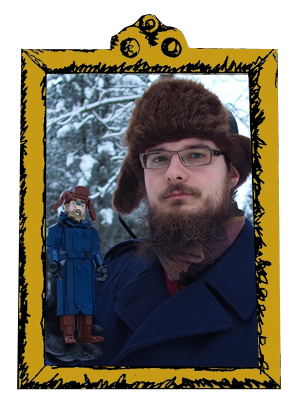This one was built for my LUG Palikkatakomo Ry's contest in April. The contest was supposed to be held in HupiCon event with audience voting, but that was naturally cancelled because of the virus. Fortunately the contest was turned into old-school forum contest, with new feature of anonymous entries. The idea of the contest was to build a real animal - as simple as that. Out of sixteen entries I got the first place on LUG voting and the second place on Facebook voting that substituted the audience voting.

I like Great Grey Owl. It's very majestetic bird with certain humoresque qualities. I'm not certainly sure if I'm seen one in wild or not; I have a vague memory of seeing a large grey owl in local Northern Carelian forest eleven years ago. But my strongest memory about this species is a collage poster of different birds in my grandparent's summer cottage, above my sleeping spot. It had two images of Strix Nebulosa, one of them with its goblin-like hatchlings. I also made a rather good acrylic painting of this bird around seven years ago.
The creation itself was the result of one-and-a-half-day panic sessions just before the deadline. I was in middle of my term-end deadline hecticness with lot of information modelling and computer-aided design to do, but it was matter of pride to do something for our local contest. Great Grey Owl was an obvious choice; I had made the Eurasian Pygmy Owl earlier, but my real owl ambitions always centered the Nebulosa (I actually made a forest nature center project shaped like Great Grey Owl on my second year of architecture studies. I made two LEGO models of it, and a final wooden one. It wasn't a huge success, mostly for good reasons. But I had fun with it. There be some photos on the end of the article).
I began, once again, with the face, a very definite part of the owl. The face of the real animal is essentially a dish, so I used dishes. The black circular patterns are simplified to circles of chain links and the beak is same pearl gold Bohrok eye than on the previous owl. The beard-eyebrow thing was complicated, but I'm happy with the results. Only the eyebrows are bit straight, giving it Angry Birds -like expression, but it's not too severe.
After finishing the face, I had to choose the posture of the animal. Pygmy was sitting on branch, and that felt easy and simple, so I went with flying stance instead, challenging myself in the middle of business and panic. I knew it would be worth it. There's something so dynamic in predatory bird sweeping to catch a rodent with its wide tail feathers slowing it for the catch. The profile is unique to anything I've ever build, too.

The choice of the posture resulted some tricky bits. The most challenging was the coupling of the face dish with the body. The log-like shape was made mostly with 45705 windscreen 10 x 6 x 2 curved in dark bley and some wedge plates. I like how it works. The head is dish is connected via Mixel ball joint, making it even bit posable. The another challenge was the wings and their connection. I ended up doing their structure in the simplest possible way - two plates connected to the torso with click plate joints. Of course, the wing plates are covered with array of wedges, wedge plates, modified tiles and grille tiles angled to imitate the feather patterns. The large "finger" feathers on the tips are important part of the owl's essence, so they're positioned individually. The tail feathers are very simple, using wedge plates angled with swivel plate joints.
The original idea included hanging the owl from strings. It would have made the posing more dynamic, offering some interesting display options at home. It turned out to be disastrous idea, causing lot of bad blood and boiling spleen. The centre of gravity is incredibly hard to locate on a build like this. Fortunately the centre was around the point of the legs, so I made a simple stand with some trans-clear 1 x 2 x 5 bricks. It stands out with the black backdrop but works quite discreetly in usual shelf setting. The legs are simple octagonal pillar parts; Great Grey Owl's legs are, especially during the winter, ridiculous furry tubes. The claws here exaggerate a bit, but no-one would have believed in them it they were just those pillars!






















0 comments :
Post a Comment
Note: Only a member of this blog may post a comment.